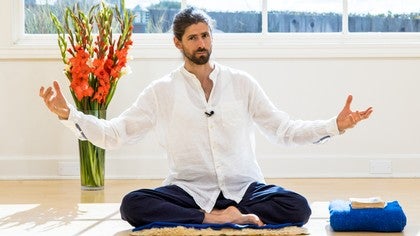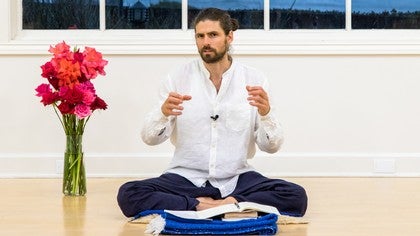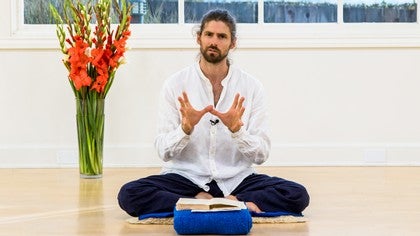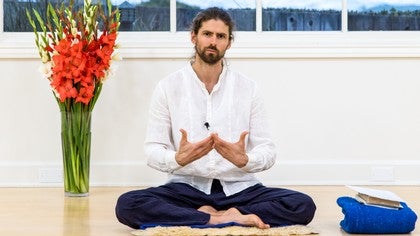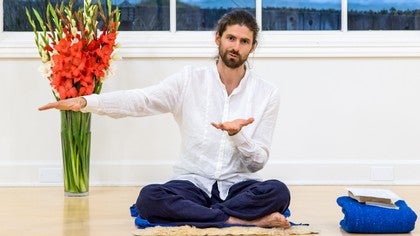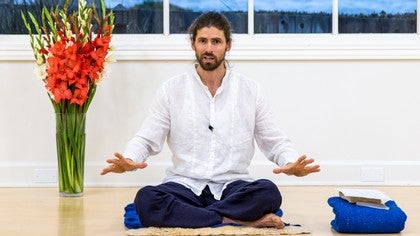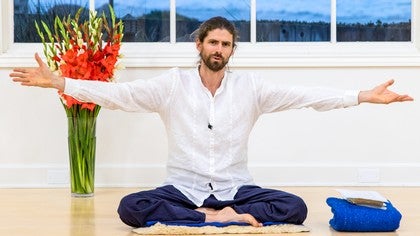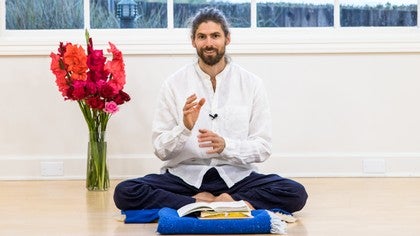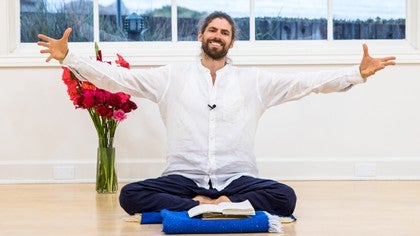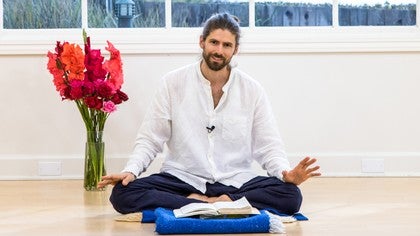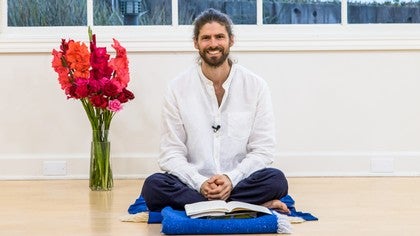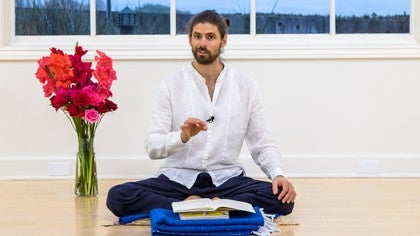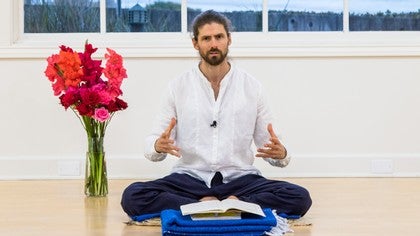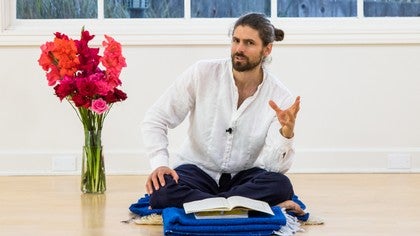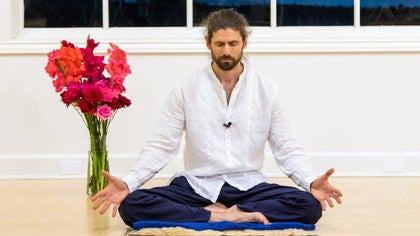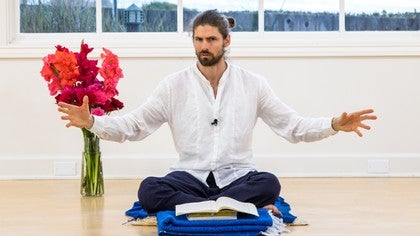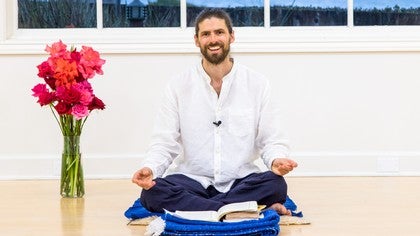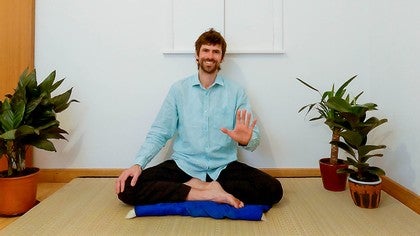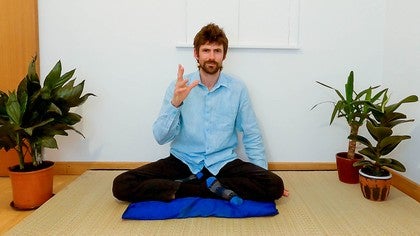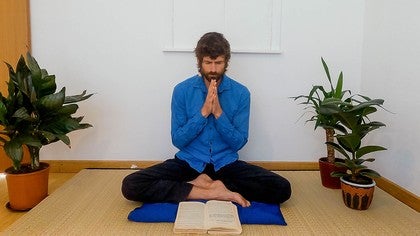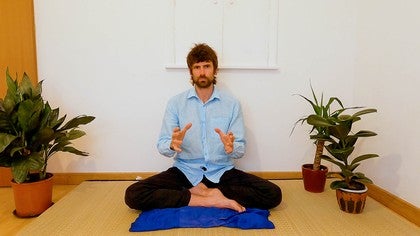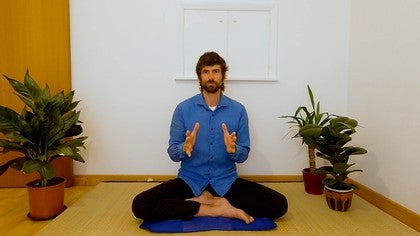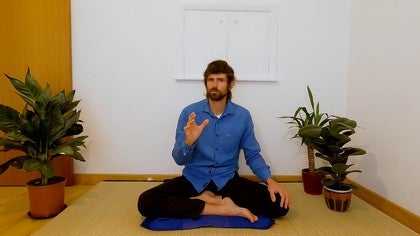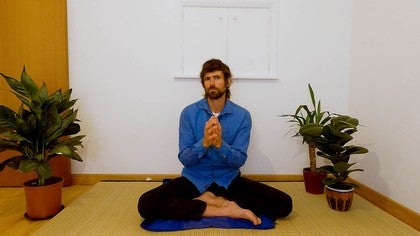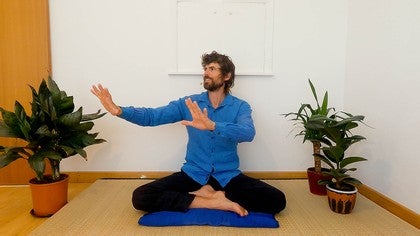Yoga Sutras of Patanjali
Together, we unravel The Yoga Sutras of Patanjali, the treasure text of the yoga tradition. Patanjali's text distills and encodes a vast body of practical teachings into a concise and thorough form and provides a frame of reference for a skillful, ongoing inquiry. James Boag infuses our study with the movement, breath, meditation and practices of Hatha Yoga and singing of Bhakti Yoga so we may more easily integrate and harmonize these teachings into our daily lives.
Season 1 - Start Where You Are
We begin to unravel the treasure of Patanjali's Sutras. In Season 1, James shares sounding practices, chants, and songs to honor the start of our practice together. We explore Sutras 1.1-1.11.
Season 2 - Practice Wholeness
In Season 2, we investigate Sutras 1.12-1.16. In these Sutras, we begin to explore the yoga practice as defined by Patanjali. Yoga practice is the long-term, wholehearted, and a dedicated effort towards steadiness.
Season 3 - Your Attention, Please
In Season 3, James unpacks Sutras 1.17-1.22. In these sutras, Patanjali begins to look at the different types of samadhi—how they work, how we can use techniques to center ourselves, and finally how we can work on resolving conditioned patterns that are no longer serving us. If we are intent then deep integration or samadhi sits very close.
Season 4 - Yogic Movement: Don't Just Sit There!
In Season 4, James shares talks, tutorials, and Hatha yoga practices to encourage us to move in a safe way that nourishes us and keeps the energy flowing freely in the body.
Season 5 - Yoga and the Supreme
To deepen our relationship with the text, James starts Season 5 with a recap of what we've covered thus far. He then goes on to unpack Sutras 1.23-1.29 where we explore devotion to God or the Supreme.
Season 6 - Obstacles and Opportunities
We look at Sutras 1.30-1.32. On this yogic path, it is normal to experience obstacles. Patanjali, as translated by James, lays out the types of obstacles that we will encounter along the path, their accompaniments, and the ways in which we can work with them.
Season 7 - Be in Relationship
In Season 7, James unpacks Sutras 1.33-1.39. We begin to look at the the principles that are considered essential to practice, as well as other techniques and meditations to assist us in coming to a steady, centered awareness. James guides us in two meditations to begin to apply the teachings.
Season 8 - Now That We Are Clear
In Season 8 we move into the final sutras of Chapter 1: Sutras 1.40-1.51, where we examine the subtle mechanisms of yogic mastery. We finish with a beautiful song to honor our time together.
Season 9 - Whistle Stop Tour of Chapter One
James offers a complete recap of Chapter One of The Yoga Sutras of Patanjali, resetting the context of these practical and timeless teachings and preparing us for Chapter Two, which we explore in Season 10. Together, we review who Patanjali was, what the Sutras are, and how the wisdom contained therein is still applicable for our lives today.
Season 10 - The Purpose of Yoga
In Season 10, James guides us through Sutras 2.1 - 2.16. We customarily perceive life through a clouded lens, which causes us to push against our reality. Yoga teaches us how we can “get in the game”, combining the cards we are dealt with the tools of yoga in order to clear the lens with which we observe reality, overcome obstacles, and find inner peace.
Season 11 - Life is the Guru
In Season 11, James guides us through Sutras 2.17-2.24. We’ve learned that we must “get in the game” of life in order to find balance and harmony. In this group of sutras, Patanjali describes the Sankhya model of reality, through which we can view the seen world as the playing field for this game of life, and the human vehicles we inhabit throughout that life as the players in the game. Sankhya yoga provides a perspective that the circumstances and events we encounter in life are meant to lead us to education, enjoyment, and emancipation.
Season 12 - Cultivating a State of Wholeness
In Season 12, we look at Sutras 2.25 - 2.32 together. We have learned that through our ignorance (avidya) we mistakenly become identified with our likes, dislikes, and experiences (samyoga). This season we begin a journey through the 8 Limbs of Yoga, Ashtanga Yoga, as a means of cleansing the lens clouded by avidya and samyoga, establishing clear-sighted awareness, and reaching a state of kaivalya, wholeness.
Season 13 - Yamas and Niyamas
In Season 13, we look more closely at the 1st and 2nd limbs of Ashtanga yoga, the Yamas and Niyamas, and what effects we might experience from cultivating them in our lives.
Season 14 - Sadhana is a Regular Practice
In Season 14, we look at Sutras 2.46 - 3.4, where Patanjali addresses the 3rd-8th limbs of Ashtanga yoga. A regular yoga practice helps us tune and steady our awareness, moving it from gross to subtle. We may then be able to quiet our external energies, and focus our concentration more intently and consistently. With this concentrated awareness we have the opportunity to savor life more fully, see ourselves as we truly are, and experience wholeness.



